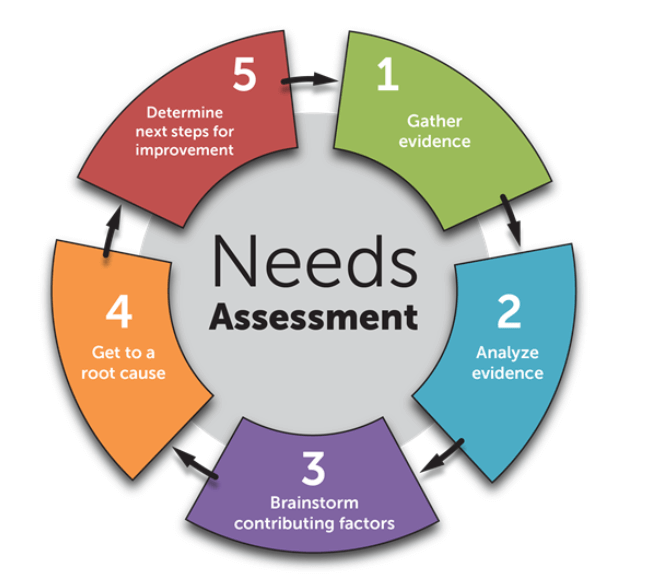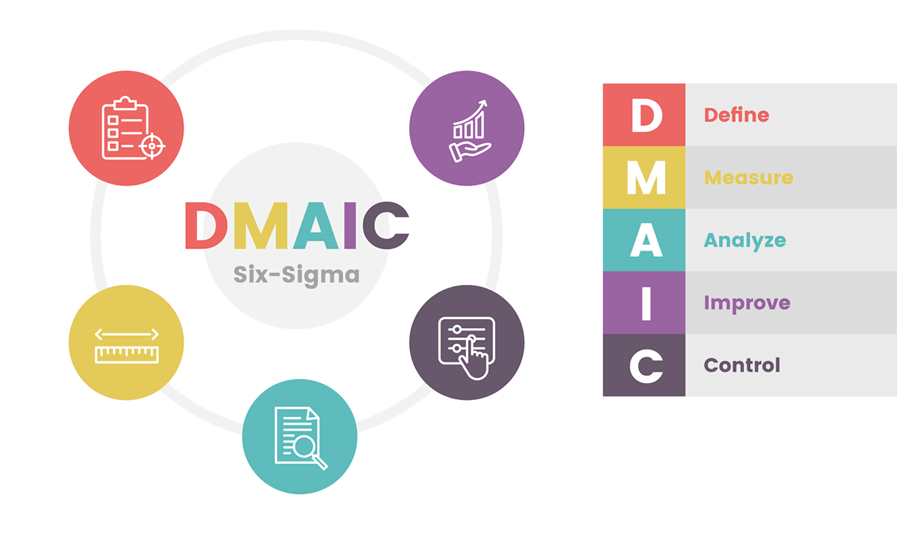We’ve all heard the saying that people don’t quit jobs, they quit managers.
Some managers can hardly greet anyone in the morning without generating grumbles from the staff. Every single week is a countdown to Friday. At the other extreme, other managers foster so much loyalty that people remain in the same position for decades, just so they can continue to work under their beloved boss.
What’s the cause for such a marked difference? How does a leader cultivate a work environment where the vibe is enthusiastic and employees are engaged?
More often than not, servant leadership is at the heart of the answer. Servant leadership isn’t about issuing edicts from on high. Rather, it seeks to empower each person at every link of the chain of command. Achieving this dedication is not just in what a leader says. It’s in how he or she communicates. It’s about enabling others, listening, and creating psychological safety.
Are you interested in knowing more about this leadership style, and how to apply it to your workplace? In this article, we’re going to drill down into the principle of servant leadership, studying quotes and books on the topic. And we’re going to look at how to apply a framework of servant leadership into your organization.

Principles, Benefits & Examples of Servant Leadership
The term “servant leadership” was first coined by Robert Greenleaf in his 1970 essay, “The Servant as Leader.” At its essence, servant leadership isn’t about the ego or the self. It’s a leadership style where teams are empowered, supported and affirmed.
Let’s look at five principles of servant leadership, with corresponding examples.
1. Transparency
Servant leadership is akin to transparent leadership. As much as possible, servant leaders cultivate flat organizations where everyone is in the know about strategic planning and goals. A servant leader doesn’t conceal failures from the team. Rather, challenges are seen as opportunities for growth and learning.
For example, if a team fails to meet a goal, or a deliverable doesn’t meet requirements, the project manager openly discusses the issue with the team. Together, they break everything down, looking at processes and causes, and in doing so root out issues and systemic risks.
This willingness to acknowledge vulnerabilities also creates psychological safety. People understand that it’s ok to not be perfect.
2. Careful Listening
Servant leaders listen. This isn’t just about hearing what others are saying. It also means reading a person by their body language and energy. For example, a servant leader doesn’t multitask when speaking to an employee. She stops what she’s doing, looks the other person in the eyes, and is fully present to the situation. To the servant leader, work relationships extend beyond the professional. In an effort to see the full picture about another person, she takes the time to get to know employees as people. A servant leader notices when something is different about the employees she manages. Maybe one person’s smile is extra big, while another has a pensive, worried air about him.
When people come to appreciate that they’re being heard at a deeper level, trust develops. Employees are more likely to disclose concerns to the boss.
3. Macro and Micro View
A servant leader doesn’t just parse out instructions and expectations. Rather, he communicates an overall purpose or mission, and then breaks it down to communicate what achieving this purpose looks like in the day to day.
Communicating the “why” invigorates the team, and motivates them to press on through mundane daily tasks. Everyone sees the bigger picture behind their role and duties.
This perspective not only instills motivation, it enables the leader to place issues in perspective. For example, when someone comes to the leader with an issue or roadblock, the leader contextualizes it within the overall vision of the organization.
4. Self-Awareness
It’s so common to turn someone off with a small slip of the tongue. Exacting demands and even an authoritative tone can leave an otherwise willing employee simmering with resentment.
A servant leader is acutely aware of how he comes across, in his choice of words and body language. He cultivates a demeanor that exudes professionalism and positivism. With this learned skill, a leader is able to instill energy into a team with a rousing speech in the morning, or even with simple gestures like a pat on the back at the end of a long day. He knows how to communicate in such a way that the team members feel supported rather than judged or scrutinized.
5. Empowerment
A servant leader doesn’t want employees to feel locked or hemmed in. Rather, she aims to have all employees assume ownership of their roles and responsibilities. Essentially, she hires the best workers she can find, then gets out of their way.
For example, a servant leader would allow a restaurant manager to make decisions around what items to include on the menu. She understands that the manager interacts with customers all day long, and so best understands the needs of the local market.
This empowerment gives people a sense of pride and ownership in their position. They don’t just go through the motions, but rather bring their full selves to their position.
This summarizes five principles of servant leadership. This type of leadership, as you can see, isn’t about power or authority. It’s about using a leadership role to enhance the lives of others. Servant leaders understand that leadership isn’t about them.
Now let’s look at some popular quotes on servant leadership.

6 Quotes on Servant Leadership
These pithy quotes help to encapsulate the essence of servant leadership and further define it.
“The servant-leader is servant first, it begins with a natural feeling that one wants to serve, to serve first, as opposed to, wanting power, influence, fame, or wealth.” ~ Robert K. Greenleaf, Servant Leadership: A Journey into the Nature of Legitimate Power and Greatness
This quote encapsulates the essence of servant leadership. It’s not about self. Rather, it’s other-focused and is about empowerment.
“The best managers figure out how to get great outcomes by setting the appropriate context, rather than by trying to control their people.” ~ Reed Hastings, co-founder of Netflix
Servant leadership is about cultivating the right environment. When employees are sufficiently motivated, all the leader needs to do is get them the tools and let them go. He or she can trust the team to get the work done, and do it with panache.
“No one will care how much you know until they know how much you care.” ~ Theodore Rosevelt
This oft-repeated quote encapsulates that knowledge, skill and expertise don’t count for anything until people like and respect you. And that’s a two way street. In order to earn another’s respect, he must receive it first.
“The person who sweeps the floor should choose the broom.” ~ Howard Behar, former president of Starbucks Coffee Company International
This clever quote is about empowerment. A capable employee understands the tools best needed to do the job. This principle also keeps decision making local. The person who makes the decisions is the one closest to the work. It’s subsidiarity, essentially.
“Ego can’t sleep. It micro-manages. It disempowers. It reduces our capability. It excels in control.” ~ Robert Greenleaf
This quote explicitly outlines the destructive effects of ego-focused leadership, and it encapsulates what servant leadership is not. It’s not about the self. Ego-driven leadership results in underperforming teams and high turnover.
“Wear one hat.” ~ Howard Behar
In this quote, Behar drives home that a servant leader is driven by core values. He isn’t one person in the boardroom, then a completely different person on the weekends. Rather, everything he does is informed by a unified set of principles.
With these quotes summarized, let’s turn to some of the best books on the topic of servant leadership.

3 Top Books on Servant Leadership
Servant leadership is an age old concept that’s enjoyed a resurgence in the past several decades. Many managers, leaders and academics have studied and written about it. Here is a brief summary of three of the top books on servant leadership.
On Becoming a Servant Leader: The Private Writings of Robert K Greenleaf
In his 36 years as a manager and researcher at AT&T, Robert Greenleaf developed and practiced the principles of servant leadership, and then he shared them with the world. While his 1970 Essay “The Servant as Leader” introduced the concept of servant leadership, this book shares several more of essays he wrote on the topic. In the essays, Greenleaf cites his experience at AT&T. The book also includes a series of lectures that he gave at Dartmouth.
It’s Not About the Coffee: Lessons on Putting People First From a Life at Starbucks by Howard Behar
As we know all too well, Starbucks blew its competition out of the water back in the 90s, sprouting up a franchise as prolific as McDonalds. What was the secret to its success? A certain Howard Behar came on board with the company when it had only 26 locations. Within just six years, he had grown the company to 400 locations, and established its international market.
In his book “It’s Not About the Coffee,” Behar recounts how he accomplished this feat by embracing and propagating a culture of servant leadership at the company. The book includes a priceless anecdote of a tenacious Starbucks manager who advocated serving a novel new drink. While wary of her suggestion, Behar trusted her instinct. The Frapuccinos were launched onto the market, quickly becoming a runaway success. Today that drink alone has over one billion dollars in annual sales. A true testament to the wisdom of empowering employees and trusting their expertise.
The Servant by James Hunter
In this book, Hunter recounts a fictional anecdote of a failing manager who winds up at a Benedictine Monastery. His immersion in the monastic lifestyle teaches him that a successful approach to leading is founded on the principles of love, service and sacrifice.

A Framework for Servant Leadership
While it’s fairly easy to grasp the idea of servant leadership, putting it into practice is another story. Anyone who leads a team can easily fall into the trap of handing out orders and micromanaging, two practices that quickly demotivate a team. Let’s look at five tactics that foster a culture of servant leadership within an organization.
1. Lead by Example
As previously mentioned, a servant leader wears one hat. If they propagate a message of collaboration and gratitude, they must live it as well. This consistency and role modeling is critical to building a culture that empowers and supports everyone.
2. Establish a Higher Purpose
A servant leader motivates a team to aspire. He or she establishes objectives that are greater than the practical function of the organization. For example, if the business sells cakes, the higher purpose is to create warmth and connection between families and friends.
By framing the workday with the higher objective in mind, the servant leader gives meaning to the work, and compels a team to aspire to excellence.
3. Talk About the Principles & Purpose (a Lot)
Once a culture of servant leadership has been established, the next step is to build a commitment to it. This is done by repeating the message over (and over) again. It takes time to integrate a new mindset into an organization, particularly if it’s accustomed to doing things differently. But by consistently and diligently communicating the message, things give way.
4. Make People Accountable
Servant leadership is about treating people with respect and dignity. It’s not about being compliant. And so when an employee violates this respect, it’s in order to have serious conversations with him or her.
5. Get Buy-In From Management
Leadership is trickle-down. In order to build a culture of servant leaders, it’s first necessary to get the top brass on board. Once they’ve bought in and fully embraced the principles, then it’s much easier to have everyone else fall into line.
While building a culture of servant leadership is tricky, it’s certainly not impossible. These guidelines help to pave the way.
Conclusion
Whether you’re seasoned or just cutting your teeth, every leader is on the lookout for new ways to empower and enthuse a team.
While there’s plenty of leadership styles out there, servant leadership is one sure way to building a motivated and accountable team. Servant-leadership is not about being self-focused. Rather, it is founded on the principles of transparency, self-awareness and selflessness.
If you’re looking to empower a remote team, consider Teamly, the all-in-one project management platform that brings teams together from all corners of the globe to collaborate.
















































